
views
Cleaning Your Helmet
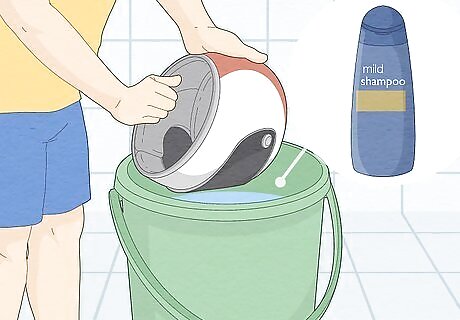
Clean your helmet regularly. If your scalp is itching or you notice a smell, it's time to wash your helmet. You may wish to wash it on a regular schedule, such as every two weeks, or after a long ride. If your helmet does not have a liner, it may be a good idea to get a helmet pad to put inside the helmet, as this can make cleaning easier. To wash the inside of your helmet, fill a bucket with warm water and a mild shampoo. Agitate the water until it is sudsy. If there is any dirt or grime on your helmet, rinse that off with water before submerging it in the bucket of soapy water. Allow the helmet to soak for a few minutes. Use your fingers to gently scrub the liner inside the helmet. Then rinse the helmet in your shower or sink until you have rinsed out all the soap. After cleaning your helmet with shampoo, let it air dry instead of blow drying, which can damage the liner. If can, however, place the helmet in front of a fan to speed up the process. You can also use a spray cleaner to eliminate odors, though this will not replace a proper cleaning.

Maintain the hygiene of your helmet's lining. Helmet lining should be cleaned on a regular basis; after all, you’re likely sweating into your helmet lining regularly when you wear it. Your helmet liner should be removable. If it’s not removable, you should still be able to clean it while in the helmet. The best way to clean a helmet liner is to get helmet interior spray. You can let this spray sit overnight on the liner and it should improve the cleanliness (and smell) of the liner.
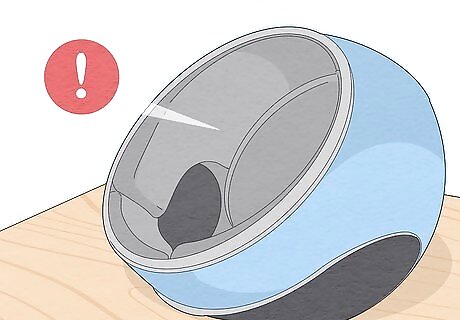
Check for static build up in your helmet. Static build up is common in helmets, since your hair and the material of the helmet liner are conductive to static electricity. If static is a problem for your helmet, there are a few ways to combat static buildup. The material of your helmet liner may be causing static build up. If you use materials like cotton or cashmere, they are less likely to have static buildup than synthetic materials. You can also change the shampoo you are using with your hair. Leave in conditioners can fight against static due to dry hair, while hair styling sheets can be rubbed over the helmet’s interior to smooth over any static cling.
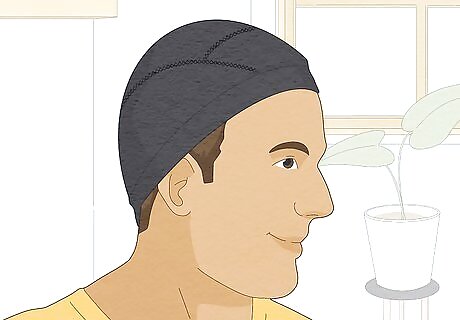
Wear a do rag, skull cap, or bandana under your helmet. If you find your scalp is even irritated by the helmet lining, it may be a good idea to wear something to protect your scalp from the helmet itself. There are a lot of options of coverings for your head that will differ based on the type of helmet you are wearing. Do rags or skull caps may be best to wear if your helmet has a tight fit. These coverings are relatively tight and should fit easily under your helmet. Bandanas usually fit looser and are bulkier. If your helmet is roomier, a bandana may be a better option for a covering under your helmet. When purchasing any physical barriers for your helmet, make sure to buy products that are of high quality. If possible, products designed to wear under helmets may be the best to prevent helmet itch.
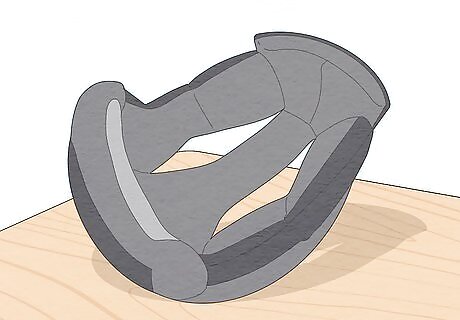
Carry replacement liners when traveling. If you are traveling for a long distance, such as a cross-country motorcycle ride, it's a good idea to bring additional replacement liners. When one gets dirty and causes itching of your scalp, you can replace it with another liner. Replacement liners can be purchased at many motorcycle or biking shops. You can also get additional helmet pads if your helmet does not come with a liner. You can wash your liners when you stop for the evening on your trip. This will enable you to have clean liners to use for each new day.
Determining the Cause of Helmet Itch
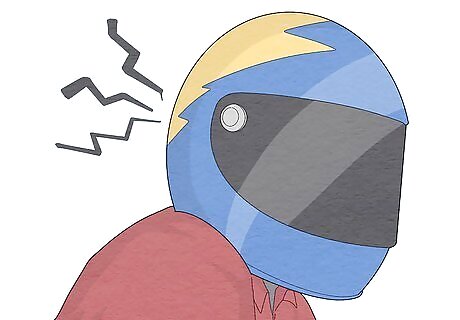
Identify the underlying cause of helmet itch. Helmet itch can be caused by a variety of things. While some causes may be due to your helmet or helmet lining, your itchy scalp may be due to a medical condition, such as contact dermatitis or even lice or ringworm. You'll wan to check with your doctor if you have an on-going issue with helmet itch so that you can be properly diagnosed. Other things can also cause helmet itch, from static to hair length to hair products. The causes of helmet itch may be due to potential issues with your scalp rather than the helmet. If this is the case, simply cleaning your helmet may not alleviate helmet itch. When you are trying to figure out the cause of helmet itch, try different tactics until one works. Even though one issue may be solved, another may be the one causing helmet itch.
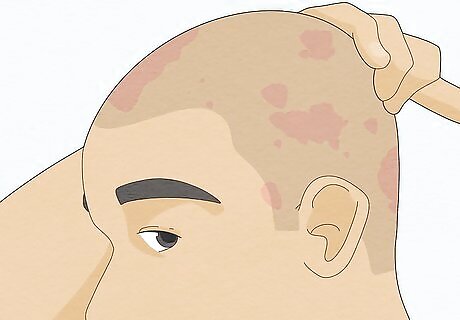
Consider that it may be contact dermatitis. This is a condition in which your skin is exposed to an irritating foreign substance or an allergen, leading to itching, redness, and discomfort. You may be reacting to the material in your helmet or possibly a chemical used to treat the inside of your helmet. Make an appointment to see your doctor for a proper diagnosis.
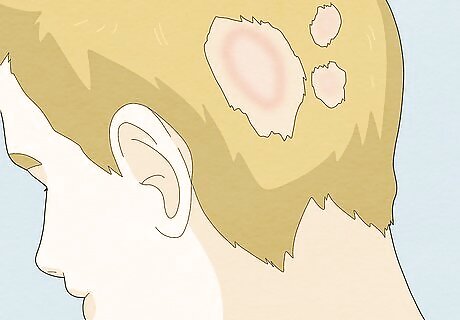
Check for ringworm. Your itchy scalp may be caused by more than just sweat or irritation — you may have dermatophytosis, or ringworm, which is a fungal infection of the skin (don't worry, there's no actual "worm" in ringworm). Ringworm commonly affects the scalp and can cause itching. Look also for raised, red, scaly patches; patches that resemble a ring; blisters that begin to ooze. See your doctor for a diagnosis of ringworm. If ringworm is confirmed, then your doctor can prescribe you medication and discuss treatment. If you have a ringworm infection, you will need to thoroughly clean your helmet, as you could reinfect yourself. Discuss this with your doctor.
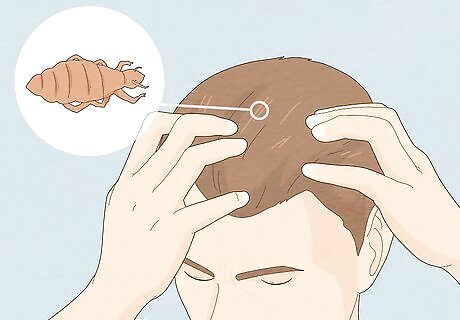
Check for lice. Another common cause of an itchy scalp is a lice infestation. Lice are parasites whose bites can cause itching. If you have lice, you may notice a tickling sensation on your scalp; red, itchy bumps; difficulty sleeping; or tiny white objects in your hair, which are lice eggs, or nits. Get someone to check your hair for lice or visit your doctor for diagnosis and treatment. You'll need to thoroughly disinfect your helmet (as well as your bedding, clothes, and other items that might harbor lice) to ensure you don't become reinfested.

Consider static as the cause of helmet itch. In most cases, helmet itch caused by static occurs pretty quickly after putting on the helmet. If static is the issue, you can try to wet your hair and scalp before putting on your helmet. For helmet itch caused by static, the best tactic is to have wet hair when putting on your helmet. Wet hair is heavier and is less inclined to produce static electricity. Static electricity can also be dangerous. If you are riding a motorcycle, static electricity could potentially spark a fire when you're filling up your bike.
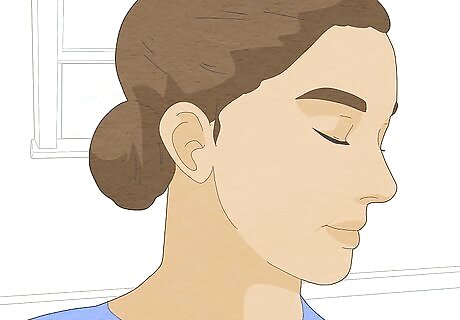
Think about the length of your hair. Hair length can be a factor and may also contribute to increased itchiness. If you have long hair, you’re more likely to experience moderate to severe itch more frequently, since your helmet will be more humid. If your hair is especially long, it may be a good idea to braid it or put it in a bun. This can keep your hair out of your face, but also keep it isolated to avoid helmet itch. Very short hair can also cause itchiness. If you have very short hair, try wearing a protecting covering to keep your hair protected from the helmet.
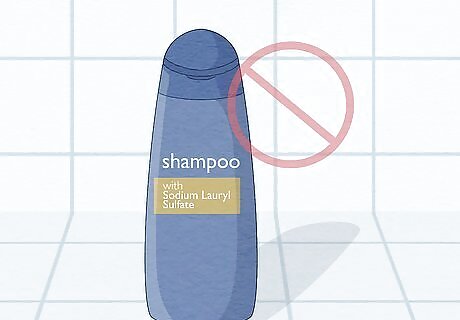
Note the hair products you are using. If possible, avoid using hair products that dry out your hair, which can cause scalp irritation when placed on the skin. These products can be especially itchy in humid conditions. Switching to hair products that moisturize your hair can help prevent itchy scalp. In particular, try to avoid products that contain sodium lauryl sulfate (SLS) since these can dry out your scalp. Additionally, eating healthy fats such as nuts and avocado can provide your hair with plenty of natural oils. These can make your hair less dry and make you less prone to itchy scalp.
Treating Helmet Itch
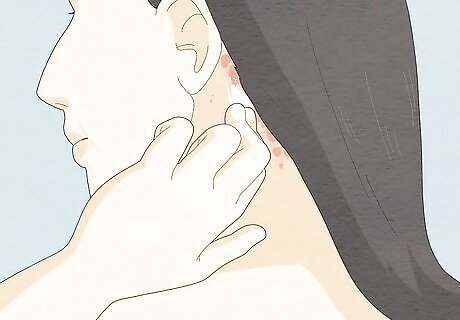
Follow your doctor's orders. If you have been diagnosed with contact dermatitis, ringworm, lice, or another medical condition that is causing your helmet itch, you will need to carefully follow your doctor's orders. You may be required to take oral medication, use topical creams, and it may even be necessary to replace your helmet. Consider holding off on riding (and, therefore, wearing your helmet) until your condition has resolved completely.
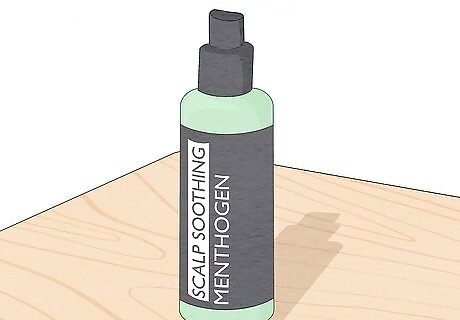
Use a topical scalp stimulant. This can help to prevent and treat itch while you're wearing your helmet. Though it can be annoying, it's important to never try to reach an itch beneath your helmet while you're on the go. Topical scalp stimulants work by cooling your scalp. They also relieve any irritants and sooth your scalp from helmet itch. These stimulants are good short-term solutions when you're on the go; however, you may need something more intensive to prevent helmet itch long term.
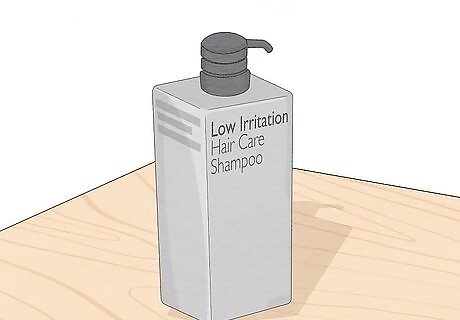
Use a low irritant shampoo. Low irritant shampoos leave your scalp's lipid barrier intact. The lipid barrier protects the scalp from infection and keeps it healthy. Additionally, dying your hair can irritate your scalp and damage its lipid barrier. In its more natural state, your hair will grow a healthy protective layer to prevent itch. If your shampoo still irritates your scalp, you can use moisturizing products as well. These products can help to replenish your scalp's natural barriers.
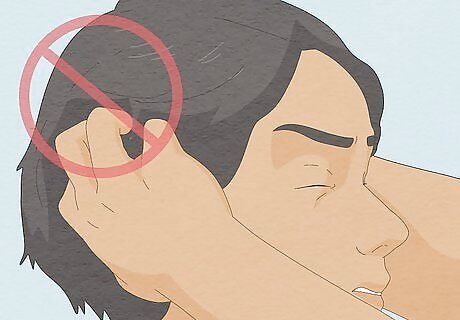
Don't scratch your helmet itch. Scratching can often make your helmet itch worse, especially using fingernails or other sharp objects. This can cause lesions in your scalp's surface, allowing bacteria in the lining to infect your scalp. Scalp infections can make helmet itch worse. They can also lead to hair loss if left untreated. If you are actively suffering from helmet itch, wetting your hair can provide some relief. Additionally, using a topical scalp stimulant will provide temporary relief.
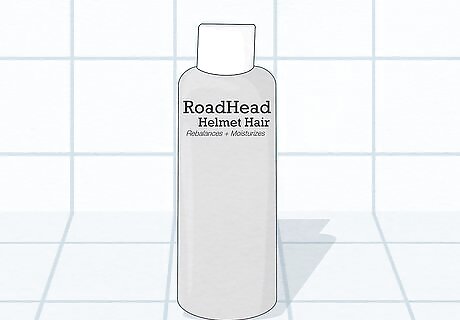
Use hair products specifically designed for use with helmets. Some hair products have been developed specifically for helmet wearers. These products may be the best type to get to avoid helmet itch. You should be able to purchase these products at most bike and cyclist shops. It may also be a good idea to ask other cyclists or your hair stylist. Many of these products may focus on "helmet hair." While some of these products may be useful, make sure they do not dry out your hair, which will irritate any existing helmet itch you have.
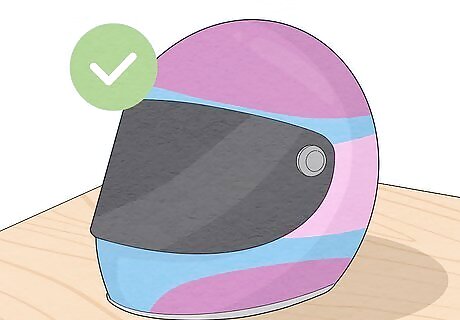
Get a new helmet. If your helmet itch is especially bad, it may be a good idea to get an entirely new helmet. Bacteria can build up in a helmet, even if it is cleaned on a regular basis. When you have cleaned your helmet, helmet lining or physical barrier, and your scalp, you may still have helmet itch. At that point, it may be better to start over with a brand new helmet entirely. Reaction to helmet lining is less likely, but possible with new headgear. If the problem persists, continue to try working with your helmet, lining, and scalp to keep away helmet itch.



















Comments
0 comment